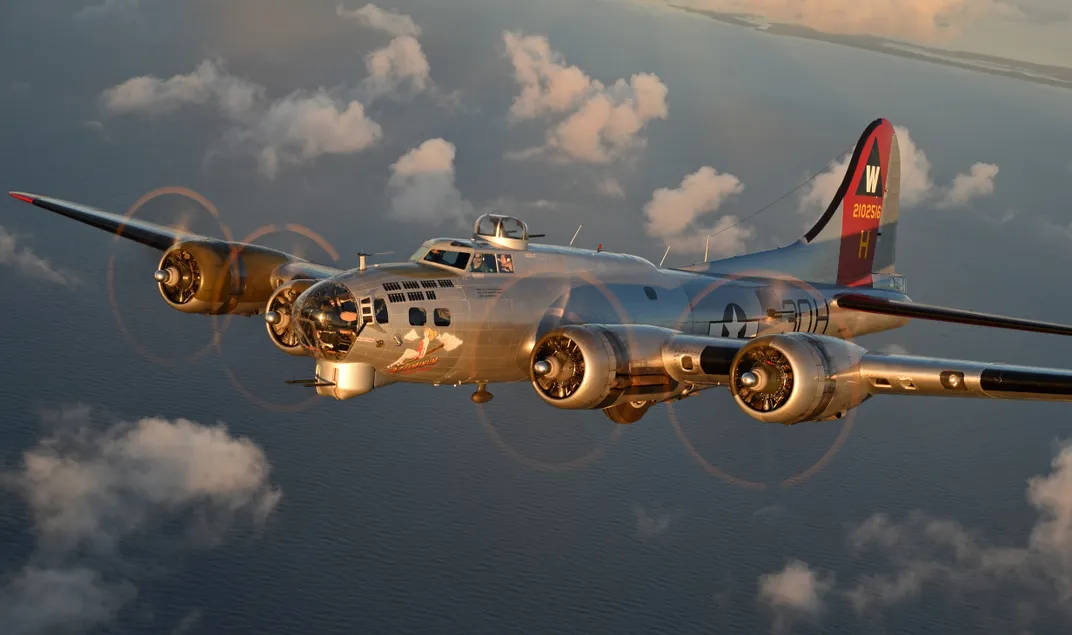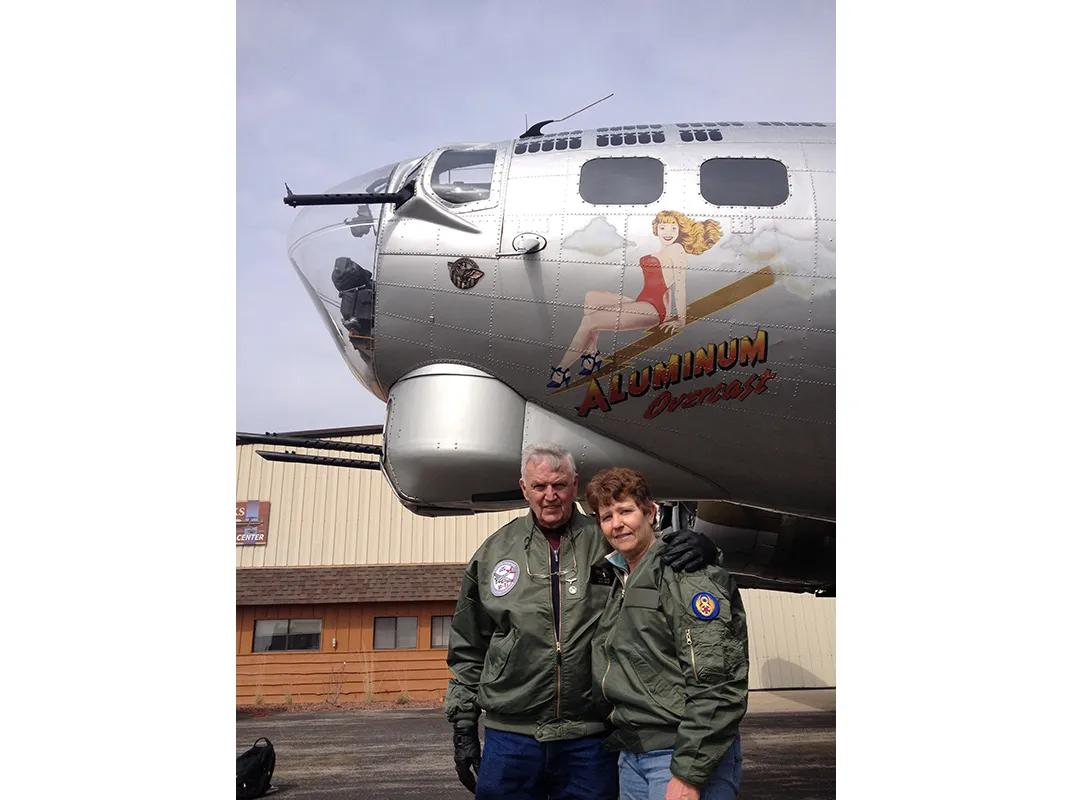Learning to Fly the Fortress
Memorable flights and other adventures
/https://tf-cmsv2-smithsonianmag-media.s3.amazonaws.com/filer/ba/ab/baab1b18-fe14-401a-a111-f2a78d8001c4/17b_jj2015_final_bjorkmanb17throttles_tml_live.jpg)
The tower at Oshkosh, Wisconsin, clears me to land in a crosswind gusting to 40 knots, 5 over the limits of the Boeing B-17 Flying Fortress I’m trying to land for the first time. My instructor, Bob Davis, utters a few choice words, but we don’t have other options—the better-aligned runway at nearby Appleton is closed because of ice.
Like many pilots, I’ve fantasized about flying one of the most famous bombers from World War II, and in the summer of 2013 the Experimental Aircraft Association Foundation listed a B-17 copilot checkout package on eBay. I had just come into some spare cash that I meant to move into a retirement account, but a B-17 rating on my pilot’s license was too tempting. I met the minimum requirements: both multi-engine and instrument ratings, a tailwheel qualification, and “recent experience.” (I didn’t actually meet the recent-experience requirement, but I figured a few days’ training would remedy that.) I submitted my minimum bid, and much to my surprise the package was mine a week later.
Despite over 850 hours in taildraggers—airplanes with tailwheels handle differently from those with conventional tricycle gear—I’d never flown an airplane bigger than a Piper Aztec, which boasts a maximum gross weight about 1/10 that of the B-17. I spent several weeks in a Piper Apache, refreshing my multi-engine and instrument skills.
The day after a brief ground school, I catch my first glimpse of EAA’s Aluminum Overcast. Nearly 20 feet tall, the Fortress towers over the other aircraft arrayed in the hangar—a helicopter, several aerobatic airplanes, and something under restoration that looks like a drone. Bob Davis is a former Air Force aviator, retired airline pilot, ex-airshow performer, and member of three aviation halls of fame. He’s been flying the Experimental Aircraft Association’s B-17 since the early 1990s, and travels the country with his wife Michelle (also a pilot) as one of only two FAA-designated pilot examiners in the airplane. When Bob flew Aluminum Overcast into Van Nuys, California, he met a woman who had built B-17s in a Burbank factory during World War II. After Bob told her the serial number of Aluminum Overcast, she pulled a small notebook from her purse, leafed through it, and said, “I did some rivet work on this airplane.” I feel instant affection for this Rosie the Riveter and her contribution to my flight in this marvelous piece of history 70 years later.
The preflight check and getting the B-17 out of the hangar are exercises in teamwork. Bob and I walk around the airplane looking for dents and dings while three crew chiefs crawl on wings to check fuel and oil levels. I feel like a queen on her throne as we strap in and watch the ground crew marshal us to the tarmac.
Once on the ramp, Bob and I start the four powerful radial engines. The start is quite easy, involving only some minor acrobatics as I toggle switches with both hands. As the nine-cylinder engines spring to life, their rumbling pulses through my body and I imagine myself as part of a World War II crew heading out to attack German targets, or perhaps a member of the WASP ferrying a new B-17 across the Atlantic to a unit in England.
Next is taxiing, which is more involved. The tailwheel locks for straight taxiways, but turns require an unlocked tailwheel, asymmetric thrust, and judicious braking. The howling crosswind complicates my first attempt, and I investigate both sides of the taxiway as Bob provides hints and a bit of help with the confusing throttle setup.
A brief storm the night before has lightly coated the ramp areas with ice and snow, making the run up tricky; when engine checks produce the expected asymmetric thrust, we start sliding. But Bob knows a trick from his early airline days, and he repositions the Fortress’ main wheels onto dry patches to finish the run up.
After taking off, we climb to 4,500 feet and practice turns, stalls, and an engine shutdown and restart. The control forces are surprisingly light, and handling the airplane feels a lot like flying a light twin. The nose goes where I want it to go, and it’s easy to maintain altitude during turns.
After hearing the bad news that ice is still melting in Appleton, we head back to Oshkosh. I’m expecting Bob to make the difficult crosswind landing, but he lets me fly, coaching me through procedures, throttle settings, and airspeeds. On final approach the airplane’s nose is pointed about 20 degrees left of the runway to correct for the wind. As we get closer I add full left aileron and nearly full right rudder to line the nose back up with the runway. Further complicating the dance, Bob adds power to the left engines to help ensure the nose stays straight. I raise the nose to slow the descent, but not quite enough before the wheels touch asphalt, so we skip a little, but then settle gently back down. After some jumpy braking on my part, Bob taxis to the ramp. With these winds today’s flying is done, which is okay by me. Just one landing has left me pooped.
The next day brings more winds, but they’re nearly aligned with the runway, and we make two flights in the Oshkosh pattern. After about six more landings, I’m starting to get the hang of it, and I finally make a squeaker. As we taxi back to the ramp after the second flight, Bob congratulates me on my new rating.
My new airman certificate reads, “airline transport pilot: multiengine land; b-17,” although there is a limitation: “B-17 Sic [Second In Command] Only.” Even so, I have major bragging rights during future hangar flying sessions.
nnn Eileen Bjorkman

